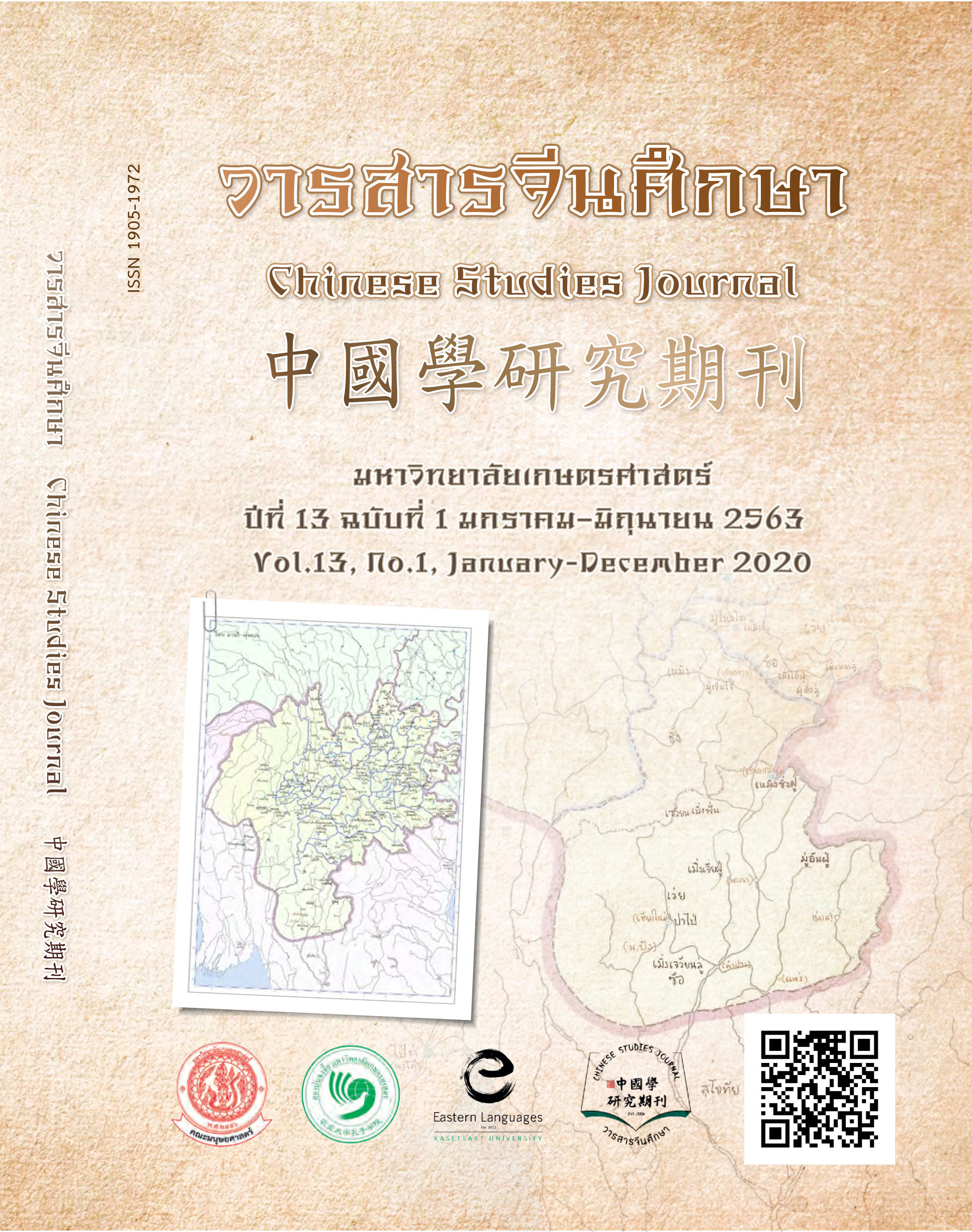Developing learning skills that are related to real life by Phenomenon based learning , learning styles from Finland
Main Article Content
Abstract
In 1985, Finland had reformed national basic education curriculum. It showed that Finland attended about freedom of learning and omitted the intensity of contents. It also stated that in-class learning would not enough when Phenomenon Based Learning: PhenoBl or PhBL was officially included in the Finland National Basic Education Curriculum. PhenoBl is the holistic learning that promote the educational overall goals with interdisciplinary from varieties of knowledge. This article provided the concept of Phenomenon Based Learning which is a kind of learning style, based on multidisciplinary and also integrate knowledge in many subjects. Moreover, it noted that the same phenomenon would interpret differently from different background knowledge. It could encourage learners to express their knowledge and experiences at large, to question and find the answer enthusiastically, to integrate knowledge through learned phenomenon, and to summary the results of learning. It could confirmed that PhenoBl is the real child – centered learning style, to be a guideline for those interested in adapting to apply in the future.
Article Details
ผลงานทางวิชาการที่ลงตีพิมพ์ในวารสารจีนศึกษา มหาวิทยาลัยเกษตรศาสตร์ เป็นลิขสิทธิ์ของผู้เขียนหรือผู้แปลผลงานนั้น หากนำลงในวารสารจีนศึกษาเป็นครั้งแรก เจ้าของผลงานสามารถนำไปตีพิมพ์ซ้ำในวารสารหรือหนังสืออื่นได้โดยมิต้องแจ้งให้ทราบล่วงหน้า แต่หากผลงานที่ได้รับพิจารณานำลงในวารสารจีนศึกษา เป็นผลงานที่เคยตีพิมพ์ที่อื่นมาก่อนเจ้าของผลงานต้องจัดการเรื่องปัญหาลิขสิทธิ์กับแหล่งพิมพ์แรกเอง หากเกิดปัญหาทางกฎหมาย ถือว่าไม่อยู่ในความรับผิดชอบของวารสารจีนศึกษา มหาวิทยาลัยเกษตรศาสตร์ ทั้งนี้ ความคิดเห็นต่างๆ ในบทความเป็นความคิดเห็นส่วนตัวของผู้เขียน ไม่เกี่ยวกับกองบรรณาธิการวารสารจีนศึกษา มหาวิทยาลัยเกษตรศาสตร์
References
กรัณพล วิวรรธมงคล. (2561). รูปแบบการพัฒนาครูโดยใช้กระบวนการชุมชนการเรียนรู้ทาง
วิชาชีพ ส่งเสริม ความสามารถจัดการเรียนรู้ตามแนวสะเต็มศึกษาในระดับการศึกษาขั้น
พื้นฐาน. วารสาร Veridian E-Journal มหาวิทยาลัยศิลปากร ฉบับภาษาไทย สาขา
มนุษยศาสตร์ สังคมศาสตร์ และศิลปะ, 11 (3) , 92-114.
พงศธร มหาวิจิตร. (2560). การเรียนกระตุ้นความคิด นวัตกรรมการเรียนรู้จากฟินแลนด์
ภาควิชาการศึกษา คณะศึกษาศาสตร์ มหาวิทยาลัยเกษตรศาสตร์. วารสารสสวท.,
46 (409) , 40-45.
ไพศาล สุวรรณน้อย. (2559). การเรียนรู้โดยใช้ปัญหาเป็นฐาน (Problem–based Learning:
PBL). เอกสารประกอบการบรรยายโครงการพัฒนาการ เรียนการสอน สถาบันพัฒนา
ทรัพยากรมนุษย์ ฝ่ายวิชาการ มหาวิทยาลัยขอนแก่น. ค้นเมื่อ 30 มกราคม 2559, จาก
http://ph.kku.ac.th/thai/images/file/km/ pbl-he-58-1.pdf.
ณัฐฌาภรณ์ เดชราช. (2562). ฐานคิดในการจัดการเรียนรู้ เพื่อพัฒนาสามัตถิยะสื่อสาร
ระหว่างวัฒนธรรมของนักศึกษาไทย.วารสารศิลปะศาสตร์ มหาวิทยาลัยรังสิต
14 (2) , 65-82.
อรพรรณ บุตรกตัญญู.(2561).การเรียนรู้โดยใช้ปรากฎการณ์เป็นฐานเพื่อการสร้างมุมมอง
แบบองค์รวมและการเข้าถึงโลกแห่งความเป็นจริงของผู้เรียน.วารสารครุศาสตร์
จุฬาลงกรณ์มหาวิทยาลัย.46 (2) , 73-90.
อัญชลิการ์ ขันติ สมเกียรติ อินทสิงห์ สุนทรี คนเที่ยง สุนันชัย ออนตะไคร้(2562).การใช้
กิจกรรมสถานการณ์จำลองเพื่อส่งเสริมความสามารถในการฟังและการพูดภาษาจีนของ
นักเรียนชั้นประถมศึกษาปีที่ 5. วารสาร Veridian E-Journal มหาวิทยาลัยศิลปากร
ฉบับภาษาไทย สาขามนุษยศาสตร์ สังคมศาสตร์และศิลปะ.12 (1) , 467-483.
พงศธร มหาวิจิตร.(2560). การเรียนกระตุ้นความคิด นวัตกรรมการเรียนรู้จากฟินแลนด์
ภาควิชาการศึกษา คณะศึกษาศาสตร์ มหาวิทยาลัยเกษตรศาสตร์ วารสาร สสวท.
46 (409) , 40-45.
ภาษาอังกฤษ
Zhukov, T. (2015). Phenomenon-Based Learning: What is PBL? Retrieved May
22, 2019, fromhttps://www.noodle.com/articles/phenomenon-based-learning-what-is-pbl.Silander, P. (2015). Phenomenon Education.Retrieve April
18, 2019 from http://www.phenomenaleducation.info/phenomenon-
based-learning.html
Kilani, A. B.(2016).What is Phenomenon-Based Learning? Retrieved May 16,
2019 from https://bit.ly/2UStmnS.
Beane, J. A. (1997). Curriculum integration: Designing the core of
democratic education. New York, NY: Teachers College Press.
Bernstein, B. (975). Class, codes and control. London, UK: Routledge and
Kegan
Symeonidis, V., & Schwarz, J. F. (2016). Phenomenon-Based Teaching and
Learning through the Pedagogical Lenses of Phenomenology: The
Recent Curriculum Reform in Finland.
Crick, R. D., Ren, K., & Stringher, C. (2014). Introduction. In R. D. Crick, K. Ren, &
C. Stringher (Eds.), Learning to learn: International perspectives from
theory and practice (pp. 1-5). London, UK: Routledge.
Commission of the European Communities. (2006). Recommendation of the
European parliament and of the council of 18 December 2006 on
key competences for lifelong learning. Retrieved from
http://data.europa.eu/eli/reco/2006/962/oj
Fertig, M. (2003). Who’s to blame? The determinants of German students’
achievement in the PISA 2000 study. Retrieved from http://ftp.iza.org/dp739.pdf
Finnish Natnal Board of Education, Hanhijoki, I., Katajisto, J., Kimari, M., & Savioja, H. (2012). Education, training and demand for labour in Finland by
2025. Retrieved from https://bit.ly/3e6VGtW
Finnish National Agency for Education. [FNAE] (2017). The new curricula in a
nutshell. Retrieved from https://bit.ly/34kKghO
Fogarty, R. (2003). How to integrate the curricula (3rd ed.). Thousand Oaks,
CA: Corwin.
Noah, H. J. (1986). The use and abuse of comparative education. Comparative
Education Review, 28(4), 550-562.
Silander, P. (2015). Phenomenon based learning rubric. Retrieved from
http://nebula.wsimg.com/c58399e5d05e6a656d6e74f40b9e0c09?
AccessKeyId=3209BE92A5393B603C75&disposition=0&alloworigin=1
Tawil, A., & Cougoureus, M. (2013). Revisiting learning: The treasure within –
assessing the influence of the 1996 Delors Report. Paris, France: UNESCO.
Retrieved from https://bit.ly/2JPgMPG
ภาษาจีน
林维贞.(2012).专题式学习.国家教育研究院. 来自: https://bit.ly/2UQCCZl
王雅玲,詹宝菁(2017)芬兰新课程纲要及现象学习探索探究:兼论其其台
湾实施跨领域课第之启示与挑战,教育脉动电子期刊第17期国家教育
研究院发行.来自:https://bit.ly/2yDU6zv


